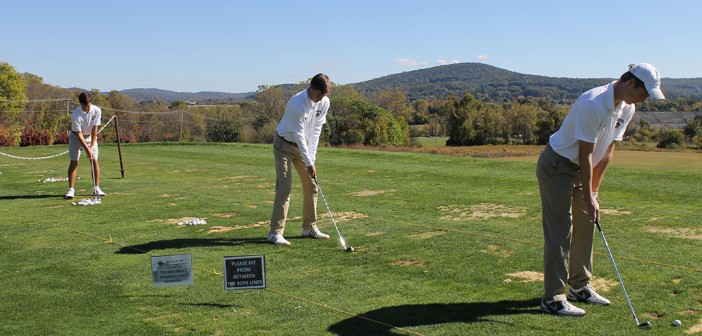College recruiting for sports like basketball and football is a nationwide obsession. Commitments by blue-chip prospects can be national news and send fan-bases into frenzy. Some sports, however, beat to a much different drum.
That is the case for golf, where the recruiting process operates under the radar.
In some cases, golfers must seek out schools that offer a golf program in order to be recruited. Alyssa Scheyd, a senior on the women’s golf team, made sure that Lehigh coaches knew who she was. Although her recruiting process took place with a different coaching staff in place at Lehigh, Scheyd worked diligently to get herself onto Lehigh’s recruiting board.
“I knew that I wanted to play golf in college, so I did some research and found the scores of teams that were within reach for me,” she said. “I filled out a pre-questionnaire on the athletic website and spoke to the coach on the phone from there so we could set up an official visit.”
Kelly Moylan, another senior on the women’s golf team, enjoyed a very different experience during her recruiting process. Moylan highlighted a willingness to play in competitive golf tournaments around the country as an important aspect to her recruiting process.
“For me, getting noticed involved playing in competitive golf tournaments outside of high school competition, which typically involved quite a bit of travel around the country,” Moylan said. Moylan played in tournaments such as the AJGA (American Junior Golf Association), IJGT (International Junior Golf Tour) and PGA Junior Series.
A major feature of the recruiting process in golf is its competitive nature. Most of the time, golfers fight for one to three spots available on each team. In addition, golfers that live in warm climates have an advantage over those that do not because they can golf year round.
“On average, because there are usually about eight girls on the team, two girls per graduating class are getting recruited to a team each year,” Moylan said. “On top of that, you have to earn your spot at Lehigh with your grades and SAT scores, as well as your golf ability.”
Because of this competition with so few spots available at each school, many golfers must find ways to set them apart from their competition beyond their scores on the course.
“I had to have swing videos made of myself to make an impression,” Scheyd said. “I also had to have a solid record of tournament experience.”
Some players, however, attend golf academies that commit themselves to producing Division I golfers. Carlos Kim, a senior on Lehigh’s team, attended the Pendleton School in Florida, one well-known golf academy, for his senior year. The advice Kim received from coaches during the recruiting process was crucial.
“At Pendleton, there was a coach that was in charge of recruiting,” Kim said. “Having that was a huge advantage. The process can be very time-consuming, and it was great not to have to go through it alone.”
Many competitive Division I golf programs begin the recruiting process as early as sophomore year, Kim said, but most begin when prospects are juniors.
Coaches use national ranking systems to view the scores and attributes of prospects. While these rankings and websites are not nearly as vast and detailed as popular recruiting websites like Rivals, Scout and ESPN’s RecruitingNation, they are what coaches use to see scores and more for prospects.
“There are many rankings in the golf world that are taken into consideration by coaches during the recruiting process,” Kim said. “Some of these sites include the Polo ranking, Golfweek, Junior Scoreboard and even the World Amateur ranking. All of these rankings depend on the different events that high school prospects play in.”
While some Division I men’s golf programs do not offer scholarships, many of them do. Of course, as it is with many other college sports programs, it comes down to the amount of money that a school’s athletic department is willing to pump into their school’s golf program.
“A lot of good programs have scholarships available. There are good programs that don’t offer scholarships, and there are not-so-good ones that do offer them,” Kim said. “It really varies from program to program.”
Most women’s golf programs do not offer scholarships, and neither of Lehigh’s golf programs offers scholarships. However, that does not stop Lehigh’s golf program from competing at a very high level. Both Kim and Moylan received second team All-Patriot League honors as juniors.
So far this fall, both the men and women have performed well at various tournaments. The men finished third out of nine at the Tuxedo Autumn Invitational, while the women finished fourth out of 15 at the Chesapeake Bay Invitational.






Comment policy
Comments posted to The Brown and White website are reviewed by a moderator before being approved. Incendiary speech or harassing language, including comments targeted at individuals, may be deemed unacceptable and not published. Spam and other soliciting will also be declined.
The Brown and White also reserves the right to not publish entirely anonymous comments.